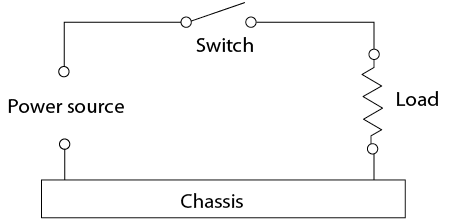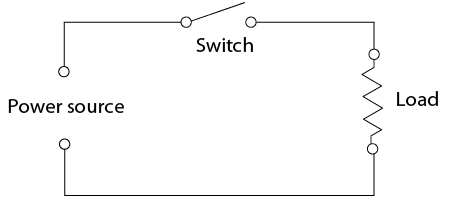5 Electrical Circuits- Basics
Learning Objectives
In the following several chapters you will describe the properties of electrical circuits through the use of Ohm’s Law, Watt’s Law, and Kirchoff’s Laws.
Describe Basic Circuit Concepts
You must understand how basic circuits function to properly diagnose and repair electrical problems. Now that you understand a simple circuit and how the basic components are connected, you can assemble more complex circuits and observe their characteristics.
Basic Electrical Circuits
A circuit must provide a complete path for current flow from the power source. The current must flow through a control device into an electrical load and back to the power source through a wire or through a vehicle chassis.
In equipment, wire is normally used only on the insulated side of the circuit, since the return circuit is the chassis. Some components may require a ground wire from the component to the frame This type of circuit is called the single wire system (Figure 1).

Single wire circuit
Some systems use two wires. For instance, the power source (battery) uses a ground wire that consists of a heavy multi-strand conductor (Figure 2).

Two wire circuit
There are three types of basic electrical circuits:
-
- series circuits
- parallel circuits
- series-parallel (combination) circuits
Adapted from: B.C. Campus Line E – Electrical Fundamentals Competency E-1 available for free at https://collection.bccampus.ca/textbooks/line-e-electrical-fundamentals-competency-e-1-describe-the-basic-principles-of-electricity-bccampus-228/
